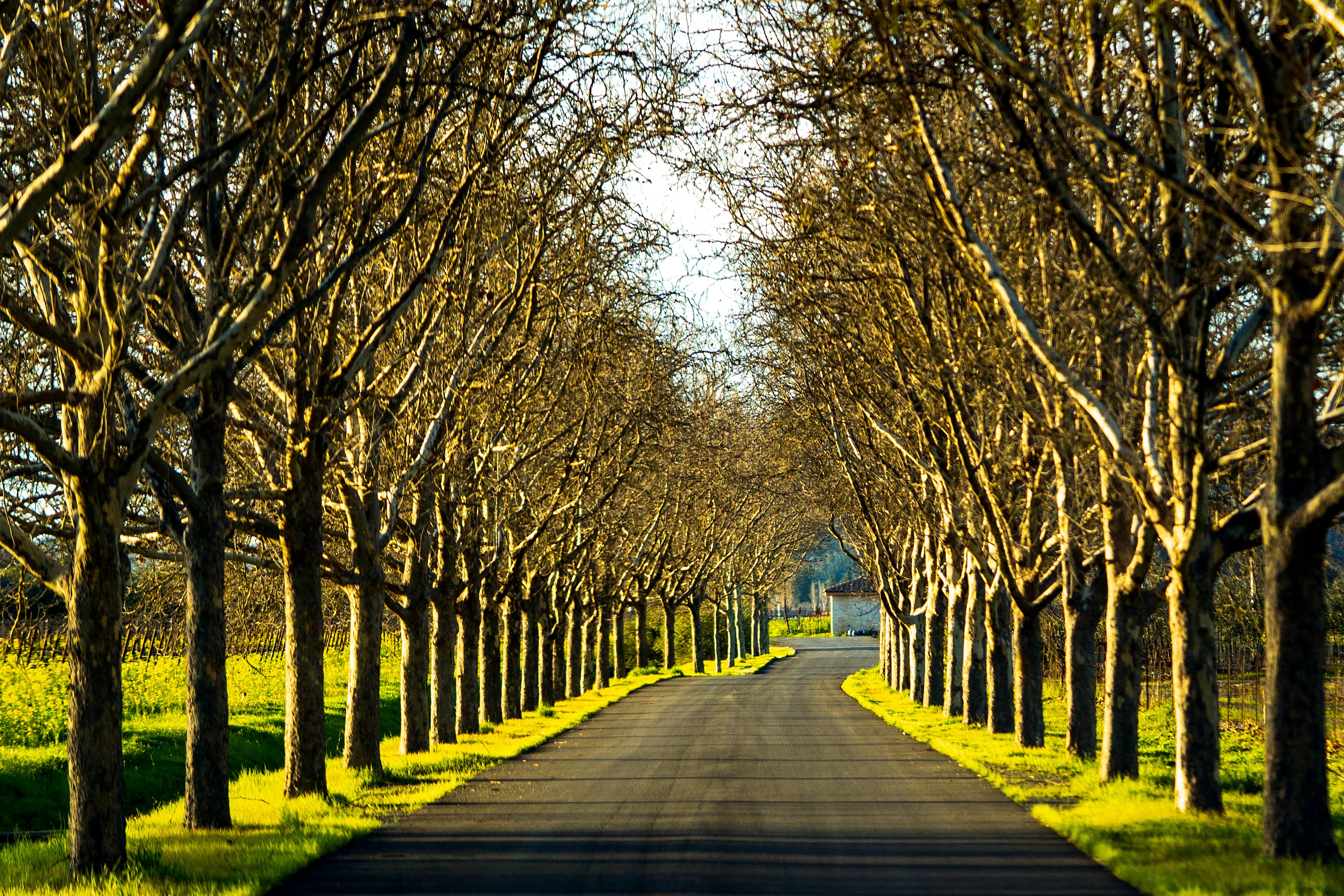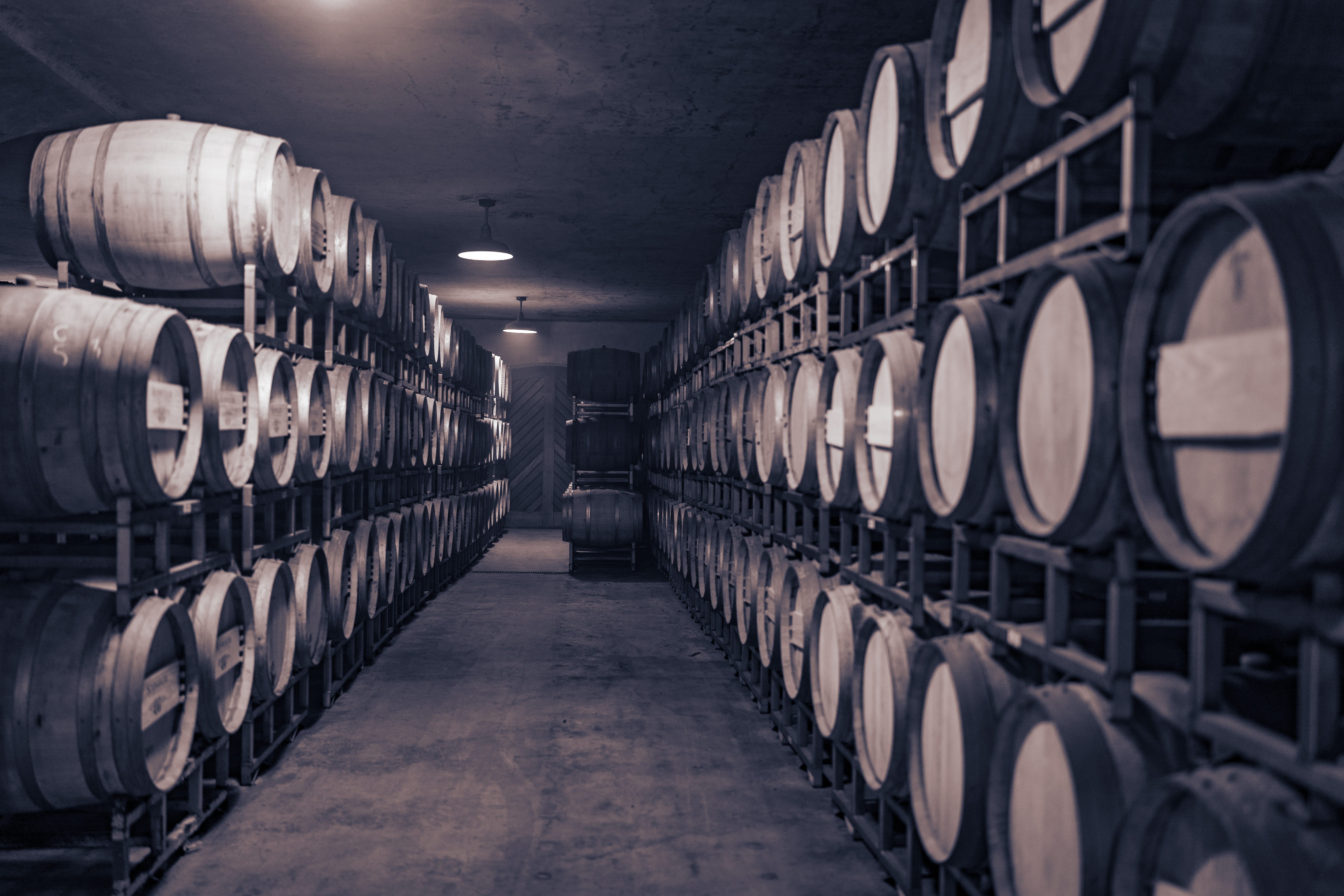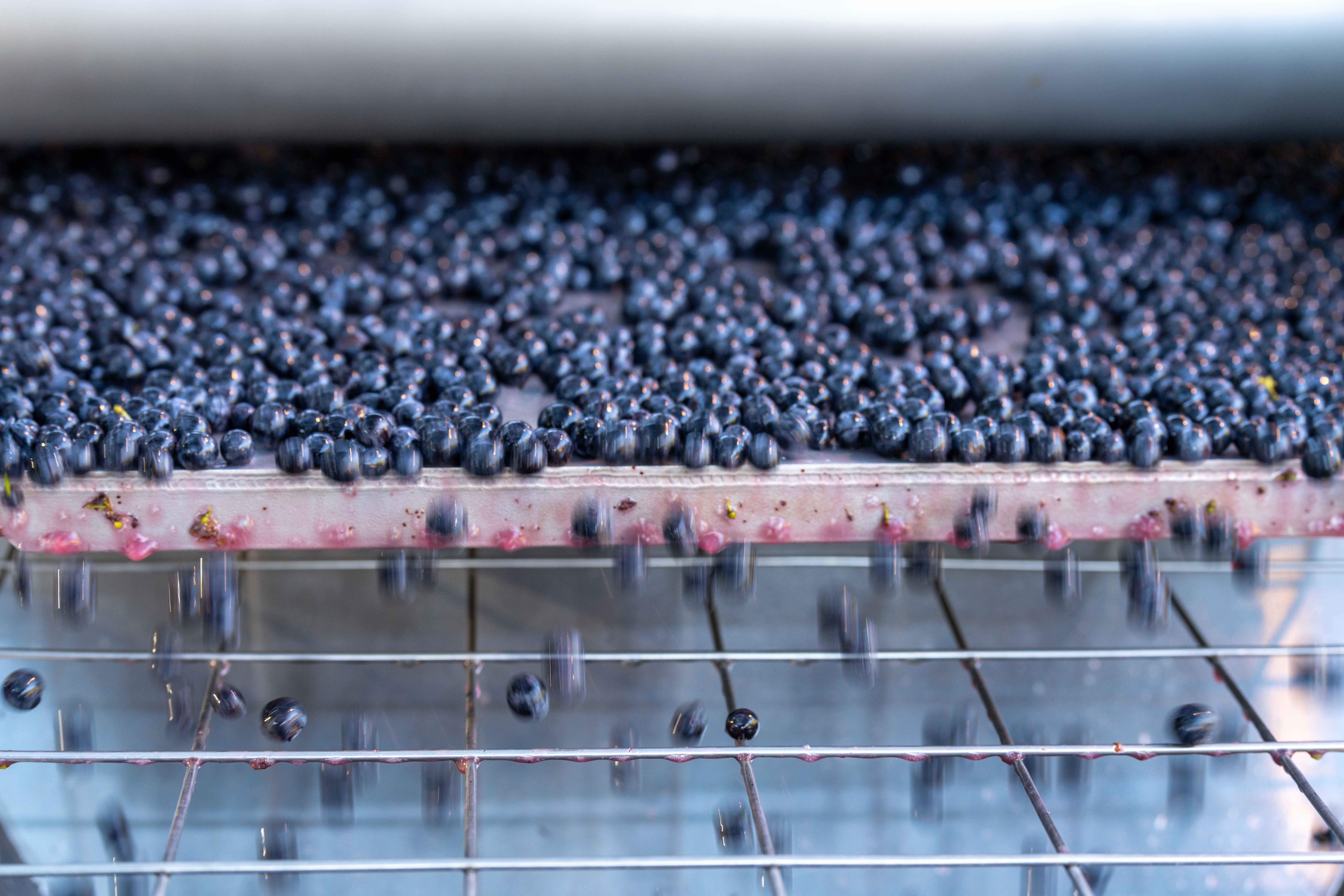Napa Valley Tourism Statistics are crucial for understanding the evolving dynamics of this renowned destination. SIXT.VN provides valuable insights into current trends, challenges, and opportunities in Napa Valley’s tourism sector, helping you plan your visit effectively. Explore the latest data and discover how Napa Valley is adapting to changing economic factors, ensuring a memorable experience for every traveler.
Table of Contents
1. Understanding Napa Valley Tourism Statistics
- 1.1 Why Are Napa Valley Tourism Statistics Important?
- 1.2 What Key Metrics Are Included in Napa Valley Tourism Statistics?
2. Historical Overview of Napa Valley Tourism
- 2.1 How Has Napa Valley Tourism Evolved Over the Years?
- 2.2 What Were the Peak Years for Napa Valley Tourism?
3. Current Napa Valley Tourism Statistics (2023-2024)
- 3.1 What Are the Latest Visitor Numbers in Napa Valley?
- 3.2 How Has the Pandemic Affected Napa Valley Tourism?
- 3.3 What Are the Hotel Occupancy Rates in Napa Valley?
- 3.4 How Much Revenue Does Napa Valley Tourism Generate?
- 3.5 What Is the Average Spending per Visitor in Napa Valley?
- 3.6 What Are the Key Demographics of Napa Valley Tourists?
- 3.7 What Are the Most Popular Activities for Tourists in Napa Valley?
- 3.8 Which Countries Do Most Napa Valley Tourists Come From?
4. Factors Influencing Napa Valley Tourism
- 4.1 How Does the Economy Impact Napa Valley Tourism?
- 4.2 What Role Does Wine Production Play in Attracting Tourists?
- 4.3 How Do Events and Festivals Affect Tourism in Napa Valley?
- 4.4 How Does the Weather Impact Napa Valley Tourism?
5. Challenges Facing Napa Valley Tourism
- 5.1 What Are the Environmental Concerns Related to Tourism in Napa Valley?
- 5.2 How Does Housing Affordability Affect the Tourism Workforce?
- 5.3 What Are the Infrastructure Limitations in Napa Valley?
- 5.4 How Is Market Saturation Impacting Napa Valley Tourism?
- 5.5 How Are Changing Consumer Preferences Affecting Wine Tourism?
6. Future Trends in Napa Valley Tourism
- 6.1 What Innovations Are Being Introduced to Enhance the Tourist Experience?
- 6.2 How Is Sustainable Tourism Being Promoted in Napa Valley?
- 6.3 What Are the Projections for Tourism Growth in Napa Valley?
- 6.4 How Will Technology Shape the Future of Napa Valley Tourism?
7. Napa Valley Tourism Compared to Other Wine Regions
- 7.1 How Does Napa Valley Tourism Compare to Bordeaux, France?
- 7.2 How Does Napa Valley Tourism Compare to Tuscany, Italy?
- 7.3 How Does Napa Valley Tourism Compare to Barossa Valley, Australia?
8. The Role of Marketing in Napa Valley Tourism
- 8.1 How Does Visit Napa Valley Market the Region?
- 8.2 What Are the Key Marketing Campaigns Used to Attract Tourists?
- 8.3 How Effective Are Social Media and Digital Marketing Strategies?
9. Napa Valley Tourism and the Local Community
- 9.1 How Does Tourism Benefit the Local Economy in Napa Valley?
- 9.2 What Are the Social Impacts of Tourism on Napa Valley Residents?
- 9.3 How Is Tourism Contributing to Local Infrastructure Development?
10. Planning Your Trip to Napa Valley
- 10.1 What Is the Best Time to Visit Napa Valley Based on Tourism Statistics?
- 10.2 What Are the Top Attractions to Visit in Napa Valley?
- 10.3 How Can SIXT.VN Enhance Your Napa Valley Experience?
11. Frequently Asked Questions (FAQs) About Napa Valley Tourism Statistics
1. Understanding Napa Valley Tourism Statistics
1.1 Why Are Napa Valley Tourism Statistics Important?
Napa Valley tourism statistics offer critical insights into the health and direction of the region’s tourism industry. Understanding these statistics helps businesses, policymakers, and community stakeholders make informed decisions. By analyzing visitor numbers, revenue generation, and demographic data, stakeholders can identify trends, challenges, and opportunities for growth and improvement. For instance, recognizing a decline in international visitors might prompt targeted marketing campaigns, while understanding peak seasons allows for better resource allocation. According to research from the Napa Valley Conference & Visitors Bureau in 2023, analyzing tourism statistics provides strategic advantages for sustainable development and economic stability.
1.2 What Key Metrics Are Included in Napa Valley Tourism Statistics?
Key metrics in Napa Valley tourism statistics include:
- Visitor Numbers: Total number of tourists visiting the region.
- Hotel Occupancy Rates: Percentage of available hotel rooms occupied.
- Revenue Generation: Total revenue generated from tourism activities.
- Average Spending per Visitor: Average amount spent by each tourist.
- Key Demographics: Age, gender, origin, and other characteristics of tourists.
- Popular Activities: Most common activities and attractions visited.
- Origin Countries: Top countries from which tourists originate.
These metrics collectively paint a comprehensive picture of the tourism landscape, enabling data-driven decisions and strategic planning. Understanding these elements is essential for maintaining and enhancing Napa Valley’s appeal as a premier destination.
2. Historical Overview of Napa Valley Tourism
2.1 How Has Napa Valley Tourism Evolved Over the Years?
Napa Valley’s tourism has transformed significantly from its early days as a primarily agricultural region to a world-renowned wine tourism destination. In the mid-20th century, the area was known for its vineyards and wineries, but lacked the infrastructure to support large-scale tourism. The late 20th and early 21st centuries saw substantial investments in hotels, restaurants, and other tourism-related businesses. According to a historical analysis by the Napa Valley Historical Society in 2015, this growth was fueled by increased recognition of Napa Valley wines on the global stage and strategic marketing efforts. Today, Napa Valley balances its agricultural heritage with a sophisticated tourism industry.
 Vineyard landscape in Napa Valley with rolling hills
Vineyard landscape in Napa Valley with rolling hills
2.2 What Were the Peak Years for Napa Valley Tourism?
The peak years for Napa Valley tourism were between 2012 and 2018, with a nearly 30% increase in visitors. The number of visitors grew from approximately 2.9 million in 2012 to almost 4 million by 2018, leading to a surge in wineries, hotels, and restaurants. However, recent economic factors, including global slowdown and persistent inflation, have complicated the landscape.
3. Current Napa Valley Tourism Statistics (2023-2024)
3.1 What Are the Latest Visitor Numbers in Napa Valley?
While specific visitor numbers for 2024 are still being compiled, the trend suggests a stabilization post-pandemic. The Napa Valley Conference & Visitors Bureau reports ongoing efforts to attract both domestic and international tourists. Real-time data analytics are crucial for guiding businesses and stakeholders toward effective decision-making in response to fluctuating tourism rates.
3.2 How Has the Pandemic Affected Napa Valley Tourism?
The pandemic significantly impacted Napa Valley tourism, causing a sharp decline in visitor numbers and revenue. Travel restrictions, lockdowns, and health concerns led to reduced hotel occupancy and winery visits. According to the Visit Napa Valley’s 2023 report, the occupancy rate for fiscal year 2023 stood at 61%, a decline from 71.7% in 2019. Despite this decrease, revenue rose by 19.1% due to higher room rates.
3.3 What Are the Hotel Occupancy Rates in Napa Valley?
Hotel occupancy rates in Napa Valley have fluctuated in recent years. The Visit Napa Valley’s 2023 report indicates an occupancy rate of 61% for fiscal year 2023, down from 71.7% in 2019. This decline underscores the challenges faced by the hospitality sector. Enhanced real-time data analytics are essential for guiding businesses, community stakeholders, and policymakers towards more informed and effective decision making.
3.4 How Much Revenue Does Napa Valley Tourism Generate?
Napa Valley tourism remains a significant economic driver, generating substantial revenue annually. While precise figures for 2024 are yet to be released, the Visit Napa Valley’s 2023 report indicates that revenue rose by 19.1% despite decreased occupancy rates, primarily due to higher room rates. It’s important to note that the report may underrepresent key challenges such as fluctuating tourism rates, economic uncertainties, demographic shifts, staffing issues, and generational changes.
3.5 What Is the Average Spending per Visitor in Napa Valley?
The average spending per visitor in Napa Valley varies depending on the type of tourist and their activities. High-end travelers engaging in wine tastings, fine dining, and luxury accommodations tend to spend significantly more than budget travelers. Understanding the average spending per visitor helps businesses tailor their offerings and pricing strategies.
3.6 What Are the Key Demographics of Napa Valley Tourists?
Key demographics of Napa Valley tourists include:
- Age: Predominantly between 35 and 65 years old.
- Income: Higher income brackets, reflecting the luxury nature of the destination.
- Origin: Primarily from the United States, with a growing number of international visitors.
- Travel Style: Often couples or small groups seeking wine-related experiences and relaxation.
3.7 What Are the Most Popular Activities for Tourists in Napa Valley?
The most popular activities for tourists in Napa Valley include:
- Wine Tasting: Visiting wineries and tasting a variety of wines.
- Fine Dining: Experiencing gourmet cuisine at top-rated restaurants.
- Hot Air Ballooning: Enjoying scenic views of the valley from above.
- Spa Treatments: Relaxing at luxury spas and wellness centers.
- Vineyard Tours: Learning about the winemaking process from grape to bottle.
3.8 Which Countries Do Most Napa Valley Tourists Come From?
Most Napa Valley tourists come from:
- United States: Primarily from California and other states.
- Canada: Significant number of visitors from Canada.
- United Kingdom: Strong interest from UK tourists.
- China: Historically a growing market, though currently facing challenges.
- Mexico: An emerging market for Napa Valley tourism.
 Aerial view of a Napa Valley vineyard
Aerial view of a Napa Valley vineyard
4. Factors Influencing Napa Valley Tourism
4.1 How Does the Economy Impact Napa Valley Tourism?
The economy significantly impacts Napa Valley tourism. Economic downturns can lead to decreased discretionary spending, affecting travel and tourism-related activities. Conversely, economic growth can boost tourism as people have more disposable income for leisure and travel. Consumer confidence and corporate spending also play crucial roles. According to the University of Michigan’s Surveys of Consumers, high prices and interest rates are the main reasons consumers cite for unfavorable conditions for purchasing big-ticket items such as homes, vehicles, and travel.
4.2 What Role Does Wine Production Play in Attracting Tourists?
Wine production is the cornerstone of Napa Valley’s tourism appeal. The region’s reputation for producing high-quality wines draws wine enthusiasts from around the world. Wineries offer tours, tastings, and educational experiences that enhance the visitor experience. The unique terroir and winemaking techniques contribute to the region’s distinctive character and attract tourists interested in viticulture and enology.
4.3 How Do Events and Festivals Affect Tourism in Napa Valley?
Events and festivals significantly boost tourism in Napa Valley. Wine auctions, food festivals, and music concerts attract large crowds and generate substantial economic activity. These events provide unique experiences and showcase the region’s culinary and cultural offerings. Strategic planning and marketing of these events are essential for maximizing their impact on tourism.
4.4 How Does the Weather Impact Napa Valley Tourism?
The weather plays a crucial role in Napa Valley tourism. The region’s Mediterranean climate, with warm summers and mild winters, makes it an attractive destination year-round. The peak season for tourism is typically during the harvest season (August to October), when the weather is ideal for vineyard tours and outdoor activities. Weather-related events, such as wildfires, can negatively impact tourism by causing cancellations and safety concerns.
5. Challenges Facing Napa Valley Tourism
5.1 What Are the Environmental Concerns Related to Tourism in Napa Valley?
Environmental concerns are a significant challenge for Napa Valley tourism. Increased tourism can strain local resources, such as water and energy, and contribute to pollution. Sustainable tourism practices, such as water conservation, waste reduction, and eco-friendly transportation, are essential for mitigating these impacts. Balancing economic growth with environmental stewardship is crucial for the long-term viability of Napa Valley tourism.
5.2 How Does Housing Affordability Affect the Tourism Workforce?
Housing affordability is a major issue for the local workforce in Napa Valley. The high cost of living, particularly housing, makes it challenging for tourism workers to live near their jobs. This can lead to staffing shortages and reduced service quality. Addressing housing affordability through affordable housing initiatives and wage increases is essential for supporting the tourism workforce. As of 2023, according to Zillow, the average home value in Napa County has surged to $903,189, up from around $550,000 in 2015, a 40% increase.
5.3 What Are the Infrastructure Limitations in Napa Valley?
Infrastructure limitations pose challenges for Napa Valley tourism. Limited transportation options, traffic congestion, and insufficient parking can detract from the visitor experience. Upgrading infrastructure, such as roads, public transportation, and parking facilities, is essential for accommodating the growing number of tourists. Investing in sustainable transportation solutions, such as bike paths and electric vehicle charging stations, can also help mitigate environmental impacts.
5.4 How Is Market Saturation Impacting Napa Valley Tourism?
Market saturation is an increasing concern in Napa Valley. The rapid expansion of wineries, hotels, and restaurants has led to increased competition and potentially diluted the visitor experience. Managing market growth through zoning regulations and promoting unique and authentic experiences can help differentiate Napa Valley from other wine regions.
5.5 How Are Changing Consumer Preferences Affecting Wine Tourism?
Changing consumer preferences are affecting wine tourism in Napa Valley. Younger generations are increasingly exploring alternative beverages, such as craft cocktails and non-alcoholic drinks. The rise in wellness culture and a focus on healthier lifestyles have also fueled greater interest in sobriety, further reducing wine sales. Adapting to these changing preferences by offering diverse experiences and appealing to a broader audience is crucial for the future of Napa Valley tourism.
 Close-up of wine glasses in a Napa Valley tasting room
Close-up of wine glasses in a Napa Valley tasting room
6. Future Trends in Napa Valley Tourism
6.1 What Innovations Are Being Introduced to Enhance the Tourist Experience?
Innovations are being introduced to enhance the tourist experience in Napa Valley, including:
- Virtual Reality Tours: Offering immersive virtual tours of vineyards and wineries.
- Personalized Wine Tastings: Tailoring wine tasting experiences to individual preferences.
- Smart Technology: Using technology to improve visitor convenience and efficiency.
- Interactive Exhibits: Creating engaging and educational exhibits about winemaking.
6.2 How Is Sustainable Tourism Being Promoted in Napa Valley?
Sustainable tourism is being promoted in Napa Valley through various initiatives, such as:
- Eco-Friendly Accommodations: Encouraging hotels and resorts to adopt sustainable practices.
- Water Conservation Programs: Implementing water-saving measures in vineyards and wineries.
- Waste Reduction Initiatives: Reducing waste through recycling and composting programs.
- Sustainable Transportation: Promoting bike paths, electric vehicles, and public transportation.
6.3 What Are the Projections for Tourism Growth in Napa Valley?
Projections for tourism growth in Napa Valley depend on various factors, including economic conditions, marketing efforts, and sustainability initiatives. While challenges exist, such as market saturation and changing consumer preferences, strategic planning and innovation can drive future growth. Focusing on unique experiences, sustainable practices, and targeted marketing can help Napa Valley maintain its competitive edge.
6.4 How Will Technology Shape the Future of Napa Valley Tourism?
Technology will play a significant role in shaping the future of Napa Valley tourism. Mobile apps, virtual reality, and data analytics can enhance the visitor experience and improve operational efficiency. Smart technology can provide personalized recommendations, streamline booking processes, and offer real-time information about events and attractions. Embracing technology can help Napa Valley stay ahead in the competitive tourism landscape.
7. Napa Valley Tourism Compared to Other Wine Regions
7.1 How Does Napa Valley Tourism Compare to Bordeaux, France?
Napa Valley and Bordeaux are both renowned wine regions, but they offer different tourism experiences. Napa Valley is known for its approachable and luxurious wine tourism, with a focus on personalized experiences and modern amenities. Bordeaux, on the other hand, emphasizes its rich history and tradition, with grand châteaux and formal wine tasting protocols. According to a comparative study by the Wine Tourism Research Center in 2022, Napa Valley attracts a more diverse range of tourists, while Bordeaux caters primarily to serious wine connoisseurs.
7.2 How Does Napa Valley Tourism Compare to Tuscany, Italy?
Napa Valley and Tuscany both offer beautiful scenery and wine-related activities, but their tourism styles differ. Napa Valley is known for its organized and structured wine tours, while Tuscany offers a more rustic and authentic experience. Tuscany’s tourism is integrated with its cultural heritage, featuring historic towns, art, and cuisine. A cultural tourism report from UNESCO in 2023 highlights that Tuscany’s broader cultural appeal attracts a wider range of visitors compared to Napa Valley’s more wine-focused tourism.
7.3 How Does Napa Valley Tourism Compare to Barossa Valley, Australia?
Napa Valley and Barossa Valley are both known for their warm climate wines, but their tourism approaches vary. Napa Valley emphasizes luxury and exclusivity, while Barossa Valley focuses on its laid-back atmosphere and family-owned wineries. Barossa Valley offers a more hands-on experience, with opportunities to participate in winemaking activities. A regional tourism analysis by Tourism Australia in 2024 suggests that Barossa Valley’s more accessible and informal approach appeals to a different segment of tourists compared to Napa Valley.
 Tasting room in a Napa Valley winery
Tasting room in a Napa Valley winery
8. The Role of Marketing in Napa Valley Tourism
8.1 How Does Visit Napa Valley Market the Region?
Visit Napa Valley markets the region through various strategies, including:
- Digital Marketing: Utilizing social media, email campaigns, and online advertising to reach potential visitors.
- Public Relations: Building relationships with media outlets to generate positive coverage.
- Trade Shows: Participating in industry events to promote Napa Valley to travel professionals.
- Partnerships: Collaborating with hotels, wineries, and other businesses to create attractive packages.
8.2 What Are the Key Marketing Campaigns Used to Attract Tourists?
Key marketing campaigns used to attract tourists include:
- Wine-Focused Campaigns: Highlighting Napa Valley’s world-class wines and wine tasting experiences.
- Culinary Campaigns: Showcasing the region’s gourmet cuisine and farm-to-table dining.
- Luxury Campaigns: Promoting Napa Valley as a high-end destination for relaxation and indulgence.
- Sustainability Campaigns: Emphasizing Napa Valley’s commitment to environmental stewardship.
8.3 How Effective Are Social Media and Digital Marketing Strategies?
Social media and digital marketing strategies are highly effective in reaching potential visitors and promoting Napa Valley. These strategies allow for targeted advertising, personalized messaging, and real-time engagement. Monitoring social media trends and analyzing digital marketing data are essential for optimizing these efforts and maximizing their impact.
9. Napa Valley Tourism and the Local Community
9.1 How Does Tourism Benefit the Local Economy in Napa Valley?
Tourism benefits the local economy in Napa Valley by:
- Generating Revenue: Tourism-related businesses generate significant revenue, contributing to the local tax base.
- Creating Jobs: Tourism provides employment opportunities for local residents in various sectors, such as hospitality, retail, and transportation.
- Supporting Local Businesses: Tourism supports local businesses, such as wineries, restaurants, and shops, helping them thrive.
- Stimulating Investment: Tourism attracts investment in infrastructure and development, improving the quality of life for residents.
9.2 What Are the Social Impacts of Tourism on Napa Valley Residents?
The social impacts of tourism on Napa Valley residents can be both positive and negative. Positive impacts include increased cultural exchange, improved amenities, and community development. Negative impacts can include traffic congestion, overcrowding, and increased cost of living. Balancing the benefits and drawbacks of tourism is crucial for ensuring a positive relationship between tourists and residents.
9.3 How Is Tourism Contributing to Local Infrastructure Development?
Tourism contributes to local infrastructure development by:
- Funding Road Improvements: Tourist revenue helps fund road improvements and transportation projects.
- Supporting Public Services: Tourist taxes support public services, such as police, fire, and emergency services.
- Investing in Parks and Recreation: Tourism revenue helps fund parks, recreational facilities, and green spaces.
- Improving Utilities: Tourism drives investment in utilities, such as water, sewer, and electricity.
10. Planning Your Trip to Napa Valley
10.1 What Is the Best Time to Visit Napa Valley Based on Tourism Statistics?
The best time to visit Napa Valley, based on tourism statistics, is during the shoulder seasons: spring (April-May) and fall (September-October). These months offer pleasant weather, fewer crowds, and a variety of events and activities. The harvest season (August-October) is also popular, but it can be more crowded and expensive.
| Season | Months | Weather | Crowds | Activities |
|---|---|---|---|---|
| Spring | April-May | Mild, sunny days | Fewer | Vineyard tours, wine tasting, outdoor dining |
| Summer | June-August | Warm, dry days | More | Wine festivals, concerts, hot air ballooning |
| Fall | Sept-Oct | Warm days, cool nights | Fewer | Harvest season, grape stomping, wine auctions |
| Winter | Nov-March | Cool, rainy days | Least | Indoor wine tasting, culinary experiences, holiday events |
10.2 What Are the Top Attractions to Visit in Napa Valley?
The top attractions to visit in Napa Valley include:
- Domaine Carneros: Sparkling wine house with stunning views.
- Castello di Amorosa: Authentic 13th-century Tuscan castle and winery.
- Robert Mondavi Winery: Iconic winery offering tours and tastings.
- Sterling Vineyards: Winery accessible by aerial tram with panoramic views.
- The French Laundry: World-renowned restaurant offering exquisite dining experiences.
10.3 How Can SIXT.VN Enhance Your Napa Valley Experience?
SIXT.VN can enhance your Napa Valley experience by providing convenient and reliable transportation services. With SIXT.VN, you can:
- Rent a Car: Explore Napa Valley at your own pace with a wide selection of rental cars.
- Enjoy Airport Transfers: Arrive and depart stress-free with reliable airport transfer services.
- Book Hotel Accommodations: Find the perfect hotel for your needs with SIXT.VN’s hotel booking service.
- Organize Tours: Discover the best wineries and attractions with SIXT.VN’s tour packages.
By choosing SIXT.VN, you can focus on enjoying your trip to Napa Valley without worrying about the logistics.
Contact SIXT.VN today to book your Napa Valley adventure:
- Address: 260 Cau Giay, Hanoi, Vietnam
- Hotline/Whatsapp: +84 986 244 358
- Website: SIXT.VN
11. Frequently Asked Questions (FAQs) About Napa Valley Tourism Statistics
Q1: What is the current trend in Napa Valley tourism?
A1: The current trend indicates a stabilization post-pandemic, with ongoing efforts to attract both domestic and international tourists.
Q2: How has the pandemic affected hotel occupancy rates in Napa Valley?
A2: Hotel occupancy rates declined from 71.7% in 2019 to 61% in 2023.
Q3: What are the most popular activities for tourists in Napa Valley?
A3: The most popular activities include wine tasting, fine dining, and vineyard tours.
Q4: Which countries do most Napa Valley tourists come from?
A4: The majority of tourists come from the United States, Canada, and the United Kingdom.
Q5: How does the economy impact Napa Valley tourism?
A5: Economic downturns can decrease discretionary spending, affecting travel and tourism-related activities, while economic growth can boost tourism.
Q6: What are the main environmental concerns related to tourism in Napa Valley?
A6: Main environmental concerns include straining local resources and contributing to pollution.
Q7: What is the best time to visit Napa Valley based on tourism statistics?
A7: The best times are spring (April-May) and fall (September-October) for pleasant weather and fewer crowds.
Q8: How can sustainable tourism be promoted in Napa Valley?
A8: Sustainable tourism can be promoted through eco-friendly accommodations, water conservation programs, and waste reduction initiatives.
Q9: What role does marketing play in Napa Valley tourism?
A9: Marketing helps attract potential visitors through digital campaigns, public relations, and partnerships.
Q10: How does tourism benefit the local economy in Napa Valley?
A10: Tourism generates revenue, creates jobs, and supports local businesses.



